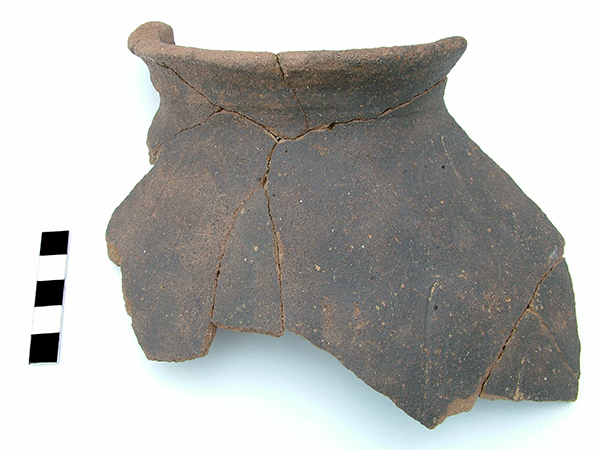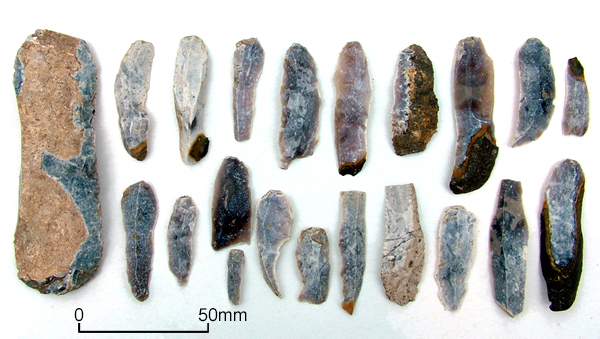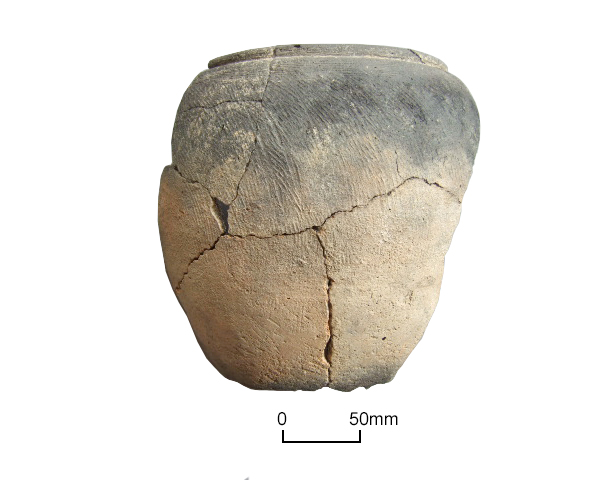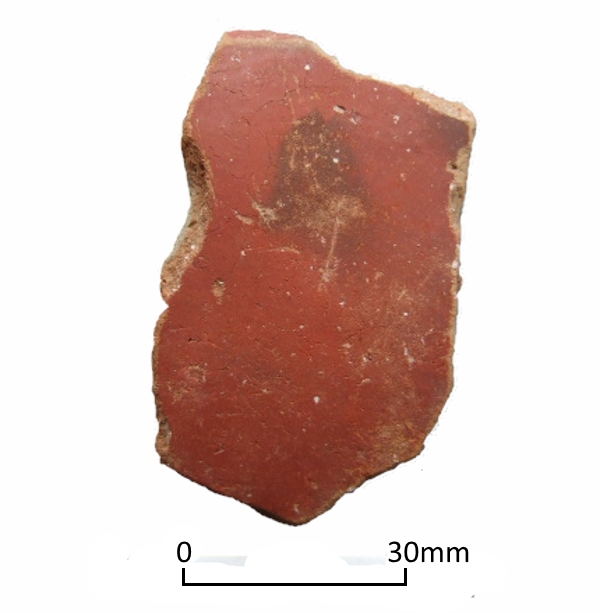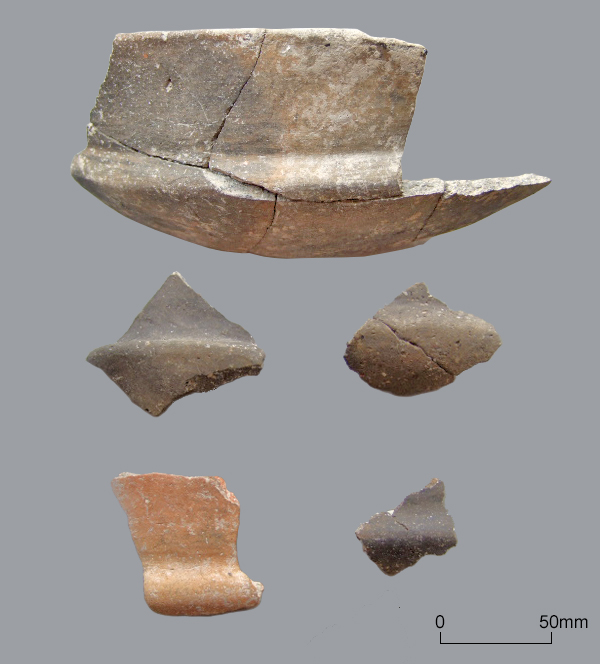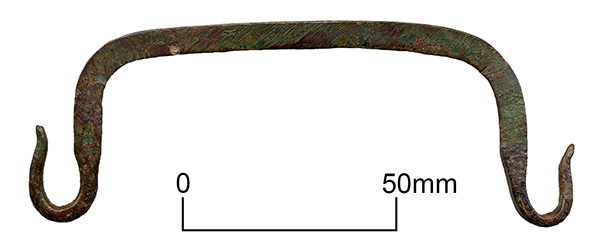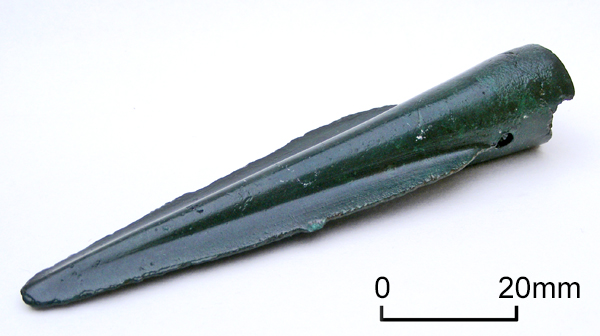
The image for VM_365 Day 194 is of a Late Bronze Age pegged spear head, dating to the period 1150 – 600 BC.
This type of spear head is found in a region spanning the Thames Valley, Cambridge Fens and the east Midlands and of course in East Kent. These pegged spearheads have considerable variation in dimension and detail and can be anything from 10 to 40cm in length.
The leaf shaped blade extends from a circular central shaft, which is hollow socket at the top end, where the spear shaft would have been fitted, secured with a pin through the holes on opposite sides of the shaft. The blade in this example is slightly worn around the edges from corrosion.
This example was found with other tools and pieces of scrap bronze in a group at a site at Manston. The slightly glossy appearance to the surface is caused by a conservation treatment applied to prevent any further corrosion.

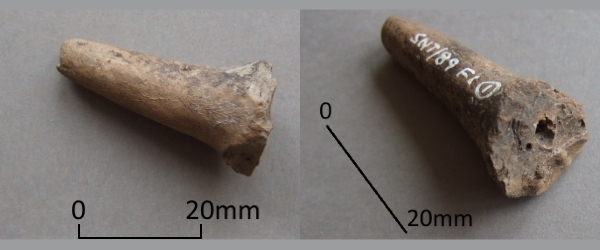
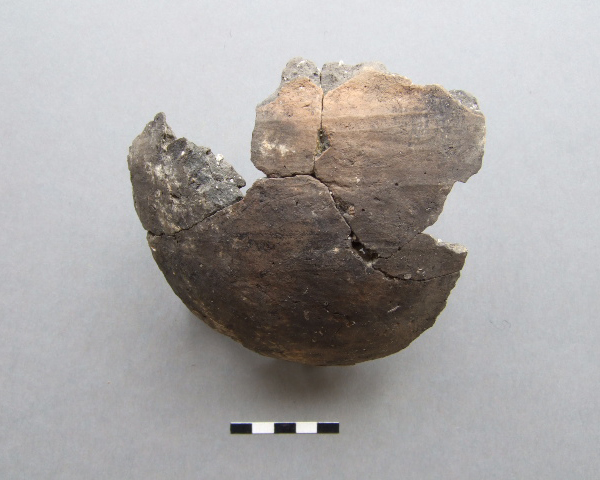 For today’s VM_365 image, on Day 187, we have another of the Neolithic vessels from Courtstairs, near Pegwell Bay, whose dating was supported by the
For today’s VM_365 image, on Day 187, we have another of the Neolithic vessels from Courtstairs, near Pegwell Bay, whose dating was supported by the 